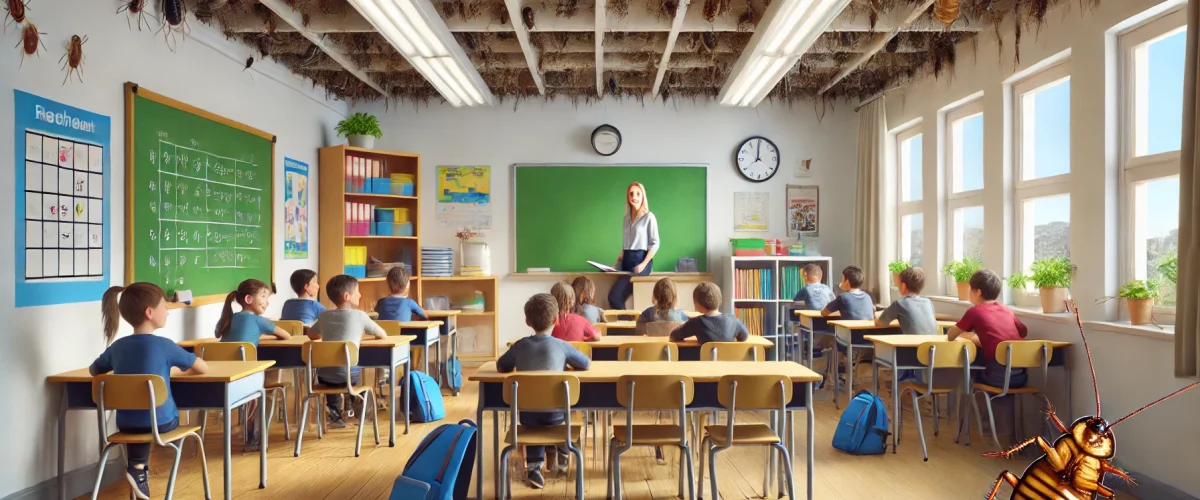Ensuring a clean and healthy learning space is crucial for every educational institution. Pest management in schools and colleges is not just about maintaining hygiene—it’s about protecting students, staff, and infrastructure from serious health and safety risks. Without proper pest control, schools can become breeding grounds for infestations that disrupt education and create unsafe conditions.
Health Risks Posed by Pests in Educational Institutions
Pests such as rodents, cockroaches, and bedbugs are more than an inconvenience. They carry bacteria, allergens, and viruses that can harm students and teachers. For instance, cockroaches and rodents contaminate food and surfaces, leading to food poisoning and allergic reactions. Additionally, their droppings can trigger asthma, which is a major concern for children.
Bedbugs, on the other hand, don’t spread diseases but can cause severe itching, anxiety, and sleep disturbances. Consequently, students struggling with discomfort may lose focus in class. Moreover, mosquito infestations can spread dangerous diseases such as dengue and malaria, putting the entire school community at risk.
The Importance of Pest Management in Schools and Colleges
Aside from health hazards, pests can cause serious damage to school property. Termites silently destroy wooden structures, while rodents chew through books, wires, and furniture. Over time, these issues can result in expensive repairs.
Furthermore, a school’s reputation can suffer if parents or students spot pests in classrooms or cafeterias. Parents want a safe and hygienic environment for their children. Therefore, educational institutions that neglect pest control may face declining enrollment and complaints from concerned families.
Legal and Ethical Responsibilities in Pest Control for Schools
Educational institutions have a legal and ethical duty to maintain a safe learning environment. Schools that fail to manage pests risk violating health and safety regulations, which can result in penalties, inspections, and even temporary closures.
Moreover, schools must consider their responsibility toward the well-being of their students. If pests are causing illnesses, allergic reactions, or distress, administrators must act immediately. Taking a proactive approach to pest management in schools and colleges shows a commitment to student safety and overall institutional excellence.
Acuity Pest Control: Your Trusted Partner in Pest Management for Schools
To effectively combat pest problems, institutions need expert intervention. Acuity Pest Control offers specialized pest management solutions tailored for schools and colleges. Unlike generic pest control methods, their approach is comprehensive, focusing on prevention, treatment, and long-term monitoring.
Their team conducts detailed inspections to identify risk areas. Then, they implement safe, eco-friendly treatments that eliminate pests without harming students or staff. Most importantly, they provide continuous monitoring to ensure schools remain pest-free throughout the year.
With Acuity Pest Control’s expertise, educational institutions can prevent infestations before they become unmanageable. By taking proactive measures, schools can focus on delivering quality education without the disruptions and risks caused by pests.
Conclusion: A Safe Learning Space Starts with Pest Control
In summary, pest management in schools and colleges is not just a precaution—it is a necessity. Pests pose significant health threats, cause property damage, and can even impact a school’s reputation. Without regular pest control, institutions risk legal issues, costly repairs, and the safety of their students.
By partnering with professionals like Acuity Pest Control, schools can maintain a clean and healthy environment where students can thrive. Investing in pest management is investing in education, safety, and peace of mind...

